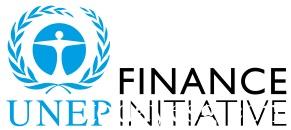Financing Nature-based Solutions
The United Nations Environment Programme Finance Initiative (UNEP FI) releases recommendations for financing nature-based solutions, aimed at expanding the scale of nature-based solutions financing to address the challenges by biodiversity, and environmental degradation.
The recommendations for financing nature-based solutions by UNEP FI will be provided to the G20 Sustainable Finance Working Group to promote sustainable economic transition.
Related Post: Introduction to Natural Capital Valuation in China by Asian Development Bank

Introduction to Nature-based Solutions Financing
More than half of the global GDP (approximately $58 trillion) relies on natural systems, and nature-based solutions financing can address the risks of biodiversity loss and climate change. At present, the total amount of global nature-negative capital flows is about 7 trillion US dollars per year, and expanding the scale of financing is an important way to solve this problem.
Nature-based solutions financing can reduce operating costs for businesses, open up new sources of income, increase customer engagement, and provide environmentally friendly products and services. It can also bring net benefits to biodiversity and ecosystems, and provide assistance to the National Biodiversity Strategies and Action Plans.
Although financing for nature-based solutions is crucial, the current investment scale in the market is still relatively small. The financing scale for nature-based solutions in 2022 is $200 billion, which is only one-third of the funding needed to achieve biodiversity goals by 2030. In terms of financing structure for nature-based solutions, governments provide over 80% of the funding. How to encourage private investment and promote cooperation among various stakeholders is the key to expanding the scale of nature-based solutions financing.
Recommendations for Financing Nature-based Solutions
The UNEP FI believes that the Sustainable Finance Working Group can expand the scale of nature-based solutions financing from the following perspectives:
- Incorporate nature-based solutions financing criteria into the green taxonomy to align financing activities with sustainable development processes: The green taxonomy can provide standardized guidance to help investors determine which activities can be considered environmentally sustainable, thereby supporting private capital investment in nature-based solutions financing. However, less than half of the existing taxonomies actively consider nature related environmental goals. Defining nature-based solutions financing criteria in the taxonomy can promote financing activities.
- Innovative investment products and markets for financing nature-based solutions: In recent years, many financial instruments related to biodiversity conservation and ecosystem restoration have emerged, with 16% of sustainable development bonds targeting biodiversity conservation. Despite the rapid development of investment products, the lack of standardized guidance may lead to greenwashing behavior. Regulatory agencies can provide innovative investment products and markets to ensure the measurability and verifiability of performance indicators.
- Establish a biodiversity credit market to reduce transaction costs: Biodiversity credit has become an important tool to support and expand financing for nature-based solutions, representing measured and evidence-based biodiversity outcomes. This market-based incentive mechanism can provide investment opportunities for financial markets and help businesses achieve their natural goals. Regulatory agencies can establish a fair and trustworthy biodiversity credit market, providing opportunities for fundraising.
- Prioritize the participation of local stakeholders in nature-based solutions financing: Local stakeholders account for 5% of the global population, but protect 80% of the world’s biodiversity, and their inclusion in nature-based solutions financing is crucial. Investors can collaborate with these stakeholders to identify, manage, and mitigate natural risks.
- Shift public spending from activities that are detrimental to nature to activities that benefit nature: The Global Biodiversity Framework suggests that the world should reduce at least $500 billion in negative incentives annually and expand positive incentives for nature. At present, the total scale of negative incentive measures is ten times that of nature-based solutions financing, and regulatory agencies should consider increasing positive incentive measures to have an impact on natural provision.
Reference:
G20 Recommendations: Advancing a Nature-Positive Economy and Just Transition








